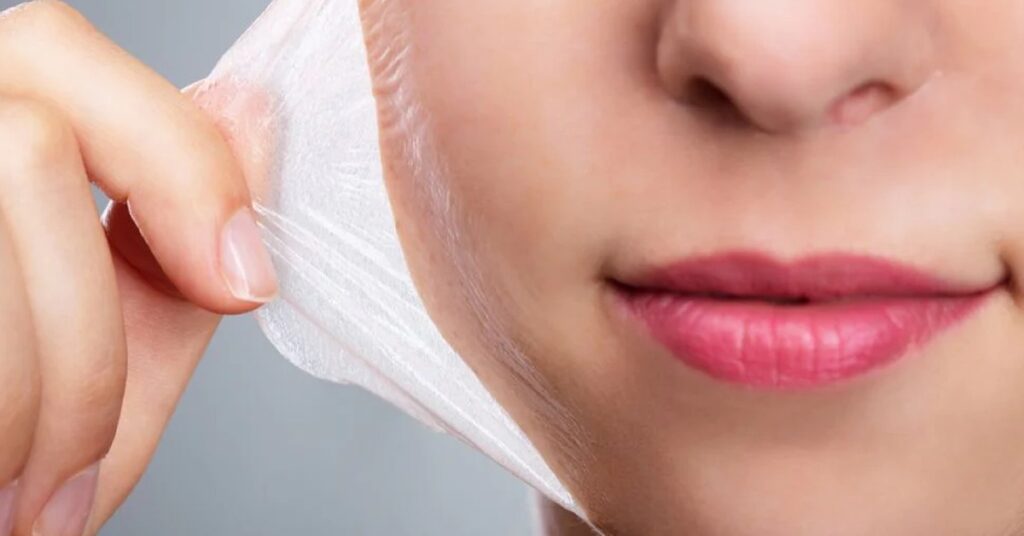A chemical peel is a procedure in which a chemical solution is applied to the skin in order to remove the top layers. Smoother skin regenerates the skin. You may need to repeat the procedure with a light or medium peel to attain the desired results.
Chemical peels are routinely used on the face to treat wrinkles, discolored skin, and scars. They can be done alone or in conjunction with other cosmetic procedures. This can also be done at different depths or levels, ranging from light to deep. Deeper chemical peels produce more dramatic results but may take more time to heal.
Why it’s done
A chemical peel is a skin resurfacing procedure. Based on the issues you’re treating with the process, you’ll choose a chemical peel in one of three depths:
- A light chemical peel is used. A light (superficial) chemical peel removes the top layer of the skin (epidermis). Chemical Peel is used to treating fine wrinkles, acne, uneven skin tone, and dryness. A little peel could occur every two to five weeks.
- Chemical peel of medium strength. A medium chemical peel eliminates epidermal skin cells as well as parts of your top middle layer of skin (dermis). A chemical peel is used to address wrinkles, acne scars, and uneven skin tone. You may need to repeat the process to get or retain the desired impact.
- A thorough or deep chemical peel. l. A deep chemical peel exfoliates the skin even more. If you have deeper wrinkles, scars, or precancerous growths, your doctor may urge you to get one. To acquire the desired impact, you will not need to repeat processes.
- Chemical peels cannot treat severe scars, wrinkles, or sagging skin.
Risks involved in Chemical peeling
- Redness, scabbing, and swelling are all possible adverse effects of a chemical peel. The treated skin becomes red during normal chemical peel recovery. After a mild or thorough chemical peel, redness may last for several months.
- Scarring from a chemical peel is rare and usually appears on the lower part of the face. Antibiotics and steroid medications may be used to lessen the look of these scars.
- Skin color changes. A chemical peel can result in darker (hyperpigmentation) or lighter (hypopigmentation) skin (hypopigmentation). Hyperpigmentation is more likely after a superficial peel, but hypopigmentation is more common after a full peel. These issues are more common in people with brown or black complexion and can be permanent in some cases.
- Infection. A chemical peel can produce a bacterial, fungal, or viral infection, such as a herpes virus flare-up, which causes cold sores.
- Damage to the heart, kidneys, or liver. Carbolic acid (phenol) in a thorough chemical peel can harm heart muscle and cause irregular heartbeats. Phenol can potentially harm the kidneys and liver. To decrease phenol exposure, a deep chemical peel is performed in 10- to 20-minute increments.
A chemical peel is not appropriate for everyone. If you are pregnant, your doctor may urge you to avoid a chemical peel or certain types of chemical peels:
- Have taken the oral acne medicine isotretinoin (Myorisan, Claravis, and others) in the last six months
- Have a personal or family history of ridged areas produced by an overgrowth of scar tissue (keloids)
- Are pregnant
You may also need to:
- Take antiviral medicine prior to your peel. To assist avoid a viral infection, your doctor may prescribe an antiviral medicine both before and after treatment.
- Apply retinoid cream. To aid healing, your doctor may advise you to use a retinoid cream, such as tretinoin (Renova, Retin-A), for a few weeks prior to treatment.
- Use a bleaching agent. To lessen the risk of side effects, your doctor may advise you to use a bleaching agent (hydroquinone), a retinoid lotion, or both before or after the surgery.
- Prevent excessive sun exposure. Excessive sun exposure prior to the operation can result in permanent uneven pigmentation in the treated areas. See your doctor about sun protection and safe levels of exposure.
- Avoid certain cosmetic treatments and hair removal methods. A week before the peel, discontinue using hair removal techniques. In addition, avoid hair dyeing, permanent-wave or hair-straightening treatments, facial masks, or facial scrubs in the week preceding your peel. Start shaving the areas that will be treated 24 hours before your peel.
- Make arrangements for a ride home. Arrange for a ride home if you will be sedated during the surgery.
